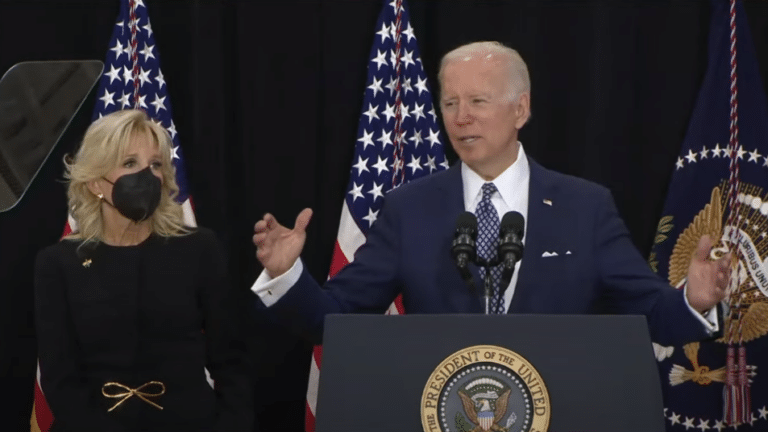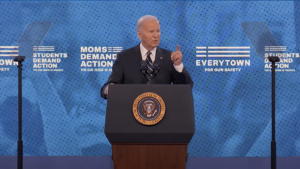The federal courts have quickly dismantled President Joe Biden’s gun agenda over the past few months. And they’ve done it without citing Second Amendment protections.
At first glance, this seems odd since the Supreme Court broadened what kind of conduct is protected by the amendment during the same period. In 2022’s New York State Rifle and Pistol Association v. Bruen, SCOTUS found the Second Amendment protected public gun carry in the same way gun ownership is protected under 2008’s District of Columbia v. Heller. Since then, federal courts have blocked multiple ATF rules seeking to reclassify, restrict, or ban bump stocks, unfinished gun parts, and firearms equipped with pistol braces.
But none of those rulings were decided by the outcome of Bruen or the test it created for judging the constitutionality of gun laws. Instead, the majority opinions all focused on the ATF’s legal maneuvering in the leadup to and adoption of the rules. That has been the weak point in the Biden Administration’s attempts to enact or defend ATF rulemaking that unilaterally attempted to rework America’s gun laws.
On Tuesday, a Fifth Circuit panel ruled the Firearms Policy Coalition and other plaintiffs were likely to win their case against Biden’s pistol-brace ban. The panel sent the case back down to a lower court for a preliminary injunction to be issued against the ATF rule. It did so because the two-to-one majority said the ATF failed to properly follow the Administrative Procedure Act (APA) when crafting the policy.
“The Final Rule affects individual rights, speaks with the force of law, and significantly implicates private interests,” Judge Jerry E. Smith wrote for the majority in Mock v. Garland. “Thus, it is legislative in character.”
Being legislative, the panel found the agency would have to go through the rulemaking required by the APA. The ATF attempted to do that, but the majority found that attempt was severely lacking. Their issue stemmed primarily from the agency’s drastic changes to the rule after it had gone through the public comment period.
“[N]owhere in the Proposed Rule did the ATF give notice that it was considering getting rid of the Worksheet for a vaguer test,” Judge Smith wrote. “Instead, the ‘Comments Sought’ section of the Proposed Rule requested only ‘additional criteria that should be considered’ and comments on whether the ATF ‘selected the most appropriate criteria.’ Proposed Rule at 30850. Removing all objective criteria operates a rug-pull on the public.”
The Second Amendment is not mentioned anywhere in the majority’s reasoning. That’s despite it being part of the plaintiffs’ claims, the concurrence, and the dissent in the case. But that should come as no surprise because the same was true for the ruling against President Biden’s “ghost gun” ban.
Early last month, Federal District Court Judge Reed O’Connor found that ATF rule overstepped its authority under the APA and was, therefore, unlawful.
“This case presents the question of whether the federal government may lawfully regulate partially manufactured firearm components, related firearm products, and other tools and materials in keeping with the Gun Control Act of 1968,” Judge O’Connor wrote in Vanderstok v. Garland. “Because the Court concludes that the government cannot regulate those items without violating federal law, the Court holds that the government’s recently enacted Final Rule[…] is unlawful agency action taken in excess of the ATF’s statutory jurisdiction. On this basis, the Court vacates the Final Rule.”
He found the APA didn’t grant the ATF the power to effectively redefine something Congress already defined.
“[T]he definition of “firearm” in the Gun Control Act does not cover all firearm parts. It covers specifically ‘the frame or receiver of any such weapon’ that Congress defined as a firearm,” he wrote. “And that which may become or may be converted to a functional receiver is not itself a receiver. Congress could have included firearm parts that ‘may readily be converted’ to frames or receivers, as it did with ‘weapons’ that ‘may readily be converted’ to fire a projectile. But it omitted that language when talking about frames and receivers.”
That ruling came after the full Fifth Circuit struck down the Trump-imposed-but-Biden-defended bump stock ban in January. That court found it too violated the APA.
“A plain reading of the statutory language, paired with close consideration of the mechanics of a semi-automatic firearm, reveals that a bump stock is excluded from the technical definition of ‘machinegun’ set forth in the Gun Control Act and National Firearms Act,” Judge Jennifer Walker Elrod wrote for the majority in Cargill v. Garland.
That decision, as well as another from a Sixth Circuit panel a few months later, also concluded the rule of lenity would invalidate the statute. That’s because the judges found the ATF’s actions over the years had cast doubt over whether a defendant could be expected to understand what is and isn’t illegal under its rule.
“The definition of ‘machinegun’ as set forth in the National Firearms Act and Gun Control Act does not apply to bump stocks,” Elrod wrote. “And if there were any doubt as to this conclusion, we conclude that the statutory definition is ambiguous, at the very least. The rule of lenity therefore compels us to construe the statute in Cargill’s favor.”
Second Amendment claims have been prolific in the wake of the Bruen ruling. Many of them have been successful, even more than those made in the aftermath of the Heller decision. It’s possible Second Amendment claims could also be successful against the ATF rules as well.
But the legal strategy that’s upended President Biden’s attempt to reshape American gun policy has instead relied on questioning the power of the executive agency he’s used to try and carry out that mission–a strategic decision that has paid off in spades for gun-rights activists.






